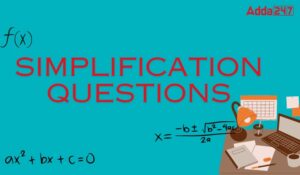Directions (1-5): The following table shows the average speeds of five different trains during six days of a week. Study the table carefully to answer the following questions.
Note: In the table, some data are missing, find them if required in any question and then proceed.
Q1. If the average speed of Kafiyat express on Saturday was 20% more than that of Wednesday, then what is the approximate average speed of Kafiyat express on Saturday if average of values of speeds over all the six days is 68 ?
(a) 78 km/hr
(b) 75.27 km/hr
(c) 72.5 km/hr
(d) 70 km/hr
(e) 82.3 km/hr
Q2. If the average of values of speeds of Prayagraj during all the six days is 25% less than value of average speed of Shatabdi train on Saturday, then speed of Prayagraj on Thursday is what percent of speed of Rajdhani on Tuesday (approximately) ?
(a) 73%
(b) 68%
(c) 71%
(d) 74%
(e) 65%
Q3. Rajdhani express runs 150 km more on Monday than that on Thursday and time taken by the train on Monday and Thursday are 5 hours and 4 hours respectively. If average speed of this train on Monday is 15 km/hr more than that on Thursday, then find the average of distance covered by the train on Monday and Thursday together.
(a) 365 km
(b) 357 km
(c) 370 km
(d) 375 km
(e) 380 km
Q4. Shatabdi Express covers total distance of 3400 km during all the six days in total time 40 hours. Speed of Shatabdi on Monday is approximately what percent more or less than average speed of the same train during all the six days together ?
(a) 4% less
(b) 4% more
(c) 2% more
(d) 2% less
(e) 6% more
Q5. If the ratio of average of speed of Shramjivi express on Saturday and Friday is 5 : 3, then the average speed of Shramjivi on Saturday is approximately what percent more than average speed of Shramjivi on Friday ?
(a) 66 (2/3)%
(b) 33 (2/3)%
(c) 77 (2/3)%
(d) 55 (2/3)%
(e) 72%
Directions (6-10): What should come in place of the question mark (?) in the following number series?
Q6. 586, 577, 541, 460, 316, ?
(a) 147
(b) 91
(c) 172
(d) 27
(e) 235
Q7. 64, 54, 69, 49, 74, 44, ?
(a) 89
(b) 69
(c) 79
(d) 99
(e) 9
Q8. 4000, 2008, 1012, ?, 265, 140.5, 78.25
(a) 506
(b) 514
(c) 520
(d) 512
(e)518
Q9. 5, 5, 15, 75, ?, 4725, 51975
(a) 520
(b) 450
(c) 525
(d) 300
(e) 375
Q10. 52, 26, 26, 39, 78, ?, 585
(a) 195
(b) 156
(c) 234
(d) 117
(e) 273
Q11. In a town, the population was 8000. In one year, male population increased by 10% and female population increased by 8% but the total population increased by 9%. Initially the number of males in the town was:
(a) 4,000
(b) 4,500
(c) 5,000
(d) 6,000
(e) 5,500
Q12. A man bought a table with marked price of Rs. 600 after getting two successive discounts of 20% and 10% respectively. He spend 10% of the buying price on transportation. At what price (in Rs.) should he sell the table to get a 15% profit?
(a) 546.48
(b) 564.48
(c) 546.84
(d) 544.68
(e) 584.46
Q13. One trader calculates his profit on C.P. while the second calculates on S.P. They both sold their commodities at 3760 rupees each and both claim 17 1/2 % profit. Find the difference of the actual profit earned by them (in rupees).
(a) 92
(b) 98
(c) 96
(d)100
(e) 94
Q14. A shopkeeper allows 20% discount on the marked price of a watch and sells it for 960 rupees. If he gives no discount his profit is 40%. If he wants to make 54% profit when he allows no discount what should be the selling price (in Rs.) of the watch.
(a) 1540
(b) 1320
(c) 1288
(d) 1600
(e) 1340
Q15. A trader mixes three types of tea in the ratio 4 : 3 : 5 costing 15 rupees per kg., 20 rupees per kg. and 30 rupees per kg. respectively. He sells the mixture at 25 rupees per kg. Find his profit percentage
(a) 11 (1/9)%
(b) 9 (1/11)%
(c) 10%
(d) 13 (1/9)%
(e) 12 (1/11)%
Check Detailed Solutions for these Questions
- Quantitative Questions for upcoming Banking and Insurance Examinations
- Study Notes of Quantitative Aptitude
- Practice More Data Interpretation Questions
- Quantitative Aptitude Section Strategy





 Simplification Questions For Bank Exams ...
Simplification Questions For Bank Exams ...
 Quantity Comparison Questions for Bank E...
Quantity Comparison Questions for Bank E...
 Mixture & Alligation Questions for B...
Mixture & Alligation Questions for B...




